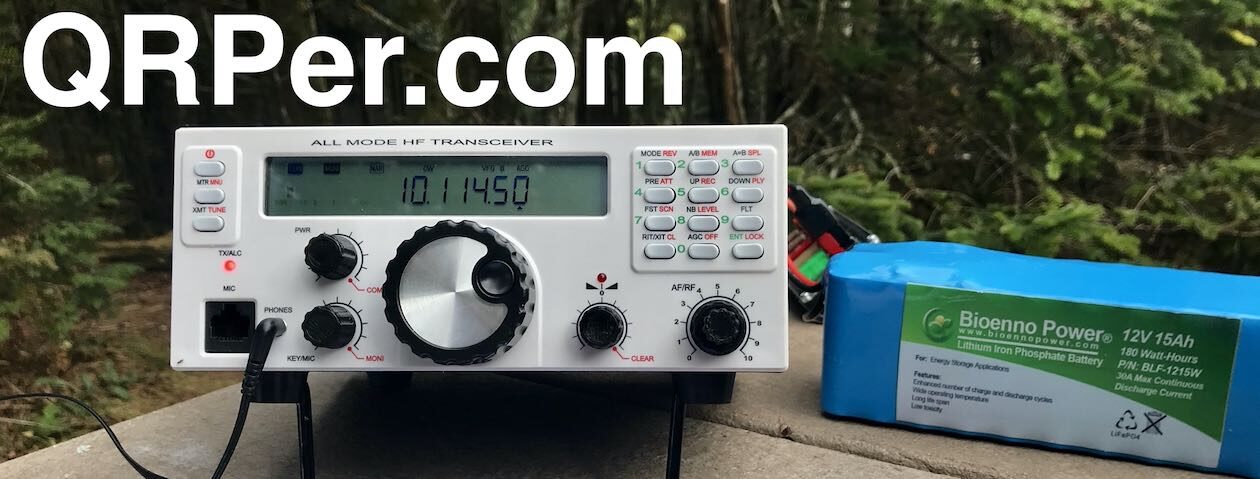Many thanks to Micah (N4MJL) who shares the following guest post:
Elecraft KH1 Anytime and Anywhere Adventures
by Micah (N4MJL)
Anywhere and anytime—that’s how I like to describe my Elecraft KH1. This radio goes everywhere I go. As an airline pilot, I bounce from coast to coast and everywhere in between almost daily. Since I’m constantly on the move, my radio gear has to be small and compact.
I’m a third-generation ham radio CW operator. Anyone who’s heard me on the air knows I’m still quite new to CW. I only started running CW activations with POTA/SOTA in the spring of 2024. Here’s the gear that’s been working well for me, along with a few photos from the locations I’ve had the pleasure of activating.
I’ve found that the Pelican M50 micro case is the perfect “shack in a box” for my KH1. This setup goes everywhere with me. Here’s what fits perfectly in the M50:
- Packtenna 9:1 random wire
- 20 ft BNC coax
- Panasonic ErgoFit earbuds
- SP4 paddles from CW Morse
- KH1 (fully loaded with internal battery and tuner)
- 30 ft throw line
- Write-in-the-Rain notebook
- High Visibility Orange Cap-O-Matic Fisher Space Pen (with lanyard)
- Desiccant silica gel pack
In pedestrian mobile configuration, the KH1 is a solid system. I’ve done several activations this way. That said, after 45 minutes of holding the KH1 in this setup, I’m ready to wrap up! Having a portable shack that lets me deploy a random wire that tunes 40-15m and a more ergonomically designed key drastically improves my capabilities.
In many urban environments where I activate POTA, pedestrian mobile is essential. Unfortunately, the security in urban parks can be unpredictable, and the KH1 allows me to operate on the go and quickly move if needed.
 Some of you may be wondering what I did to the inside of my M50 case. Well, in my defense, it’s my wife’s fault. She left me unsupervised with a glue gun and a bit of alcohol. When my KH1 arrived this spring, solar conditions were poor, so I had a few days to think and decided to turn the case into a makeshift Faraday box. I used Polyken aluminum tape, cardboard, and a glue gun to line it. Now, I know what you’re thinking: there’s no electrical bonding between the lid and lower box due to the rubber seal, so will this really work as a Faraday cage? Maybe, maybe not—but it sure looks cool! What do you think?
Some of you may be wondering what I did to the inside of my M50 case. Well, in my defense, it’s my wife’s fault. She left me unsupervised with a glue gun and a bit of alcohol. When my KH1 arrived this spring, solar conditions were poor, so I had a few days to think and decided to turn the case into a makeshift Faraday box. I used Polyken aluminum tape, cardboard, and a glue gun to line it. Now, I know what you’re thinking: there’s no electrical bonding between the lid and lower box due to the rubber seal, so will this really work as a Faraday cage? Maybe, maybe not—but it sure looks cool! What do you think?
In addition to the M50 case, I carry a support pouch (Magpul DAKA, size small). This heavy-duty, water-resistant pouch contains:
- 31 ft counterpoise wire
- AXE1 40m antenna extender
- Bioenno battery 12V 3Ah (backup battery—“1 is none, and 2 is 1” if you know, you know!)
- KH1 power cable
- KH1 right-angle antenna mount
These items aren’t essential but are nice to have for longer activations.
When I’m done flying and ready to play radio, I pack all this gear into my Flash 22 day pack. This compact, minimalist pack takes up almost no room in my flight bag and even has a built-in whistle on the chest strap, which is perfect for California!
When conditions allow, I enjoy using the full five watts of power. My go-to antenna is the SOTAbeams Band Hopper III, which is a versatile half-wave linked dipole:
- Rated 125 watts
- Center-fed with 33 ft RG174 coax
- Guying system included
- Resonant on 20m, 30m, and 40m (no tuner needed, though the KH1 tuner will also tune up 17m and 15m)
- Built-in balun
- Weighs only 14 oz
The wire/guying winders are excellent, and I’ve used this system in all kinds of environments, from sandy beaches to mountain tops above the treeline. I replaced the aluminum tent pegs with plastic ones to keep TSA happier.
The SOTAbeams Tactical Mini Mast fits diagonally in my 22″ roller board. I wrap heavy rubber-coated wire around it to secure it to posts or shrubs when needed.
Along with this radio gear, I also manage to pack a change of clothes—usually enough for a five-day trip. I typically fly three trips a month, each lasting four to five days. My roller board carries me and my radio gear from plane to plane all week long.
On a short backpacking trip along the Appalachian Trail (June 3, 2024), I activated SOTA summit W4V/BR-007 Three Ridges and the Three Ridges Wilderness area (POTA US-9959). The mountain in the distance is The Priest (W4V/BR-002), which I activated earlier this year with my LNR Precision MTR4B.
The summit of Three Ridges is a densely wooded area, so I stopped below the summit to enjoy the view, grab a quick snack, and play some radio. I snagged two POTA-only QSOs with W8WZ in Louisiana and KU8T in Indiana using the KH1’s whip antenna. Once I reached the summit, I used the Packtenna 9:1 random wire for my activation. Continue reading Flying High and Keying Low: A Pilot’s QRP Adventures Across the USA


















































































